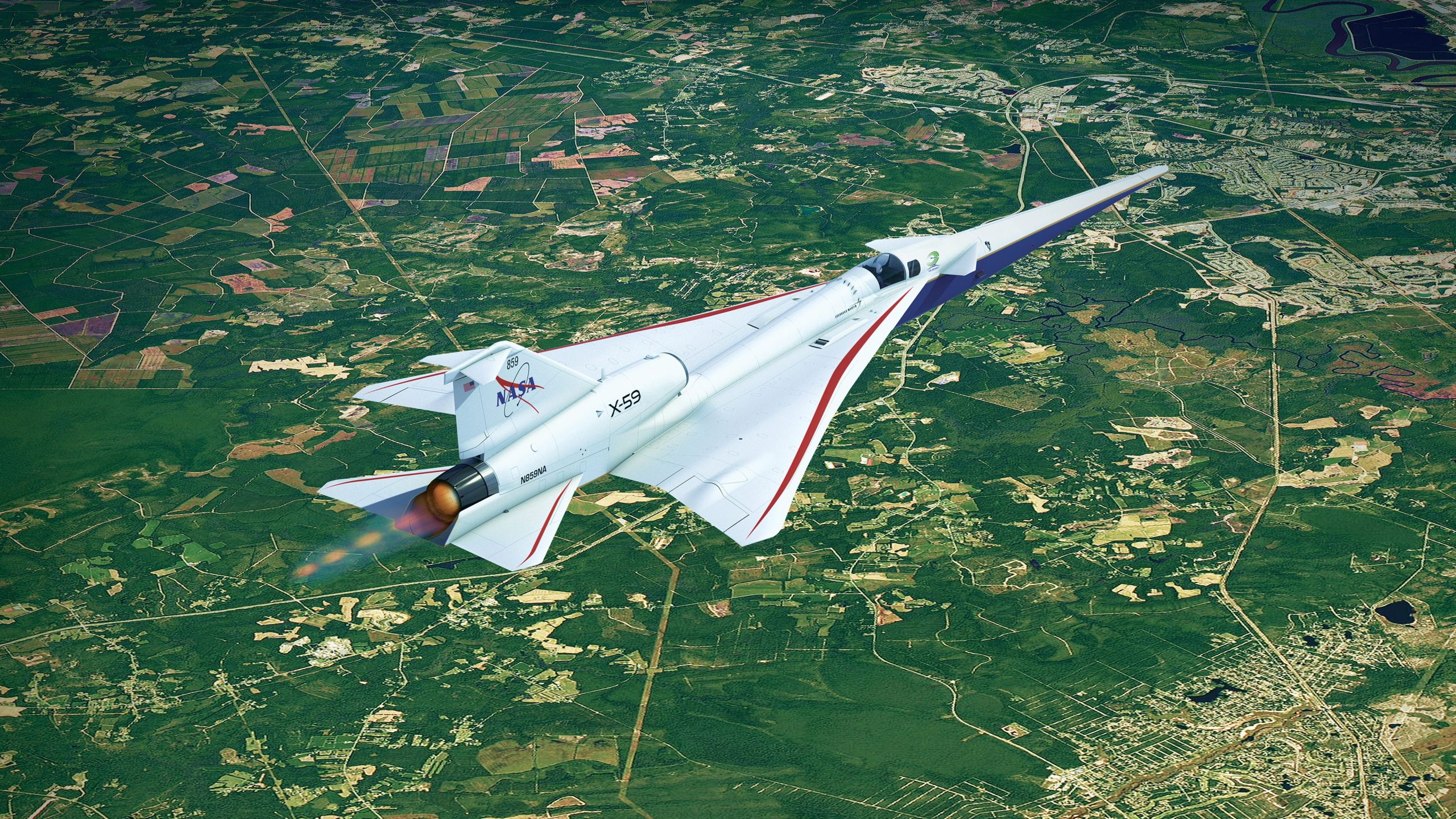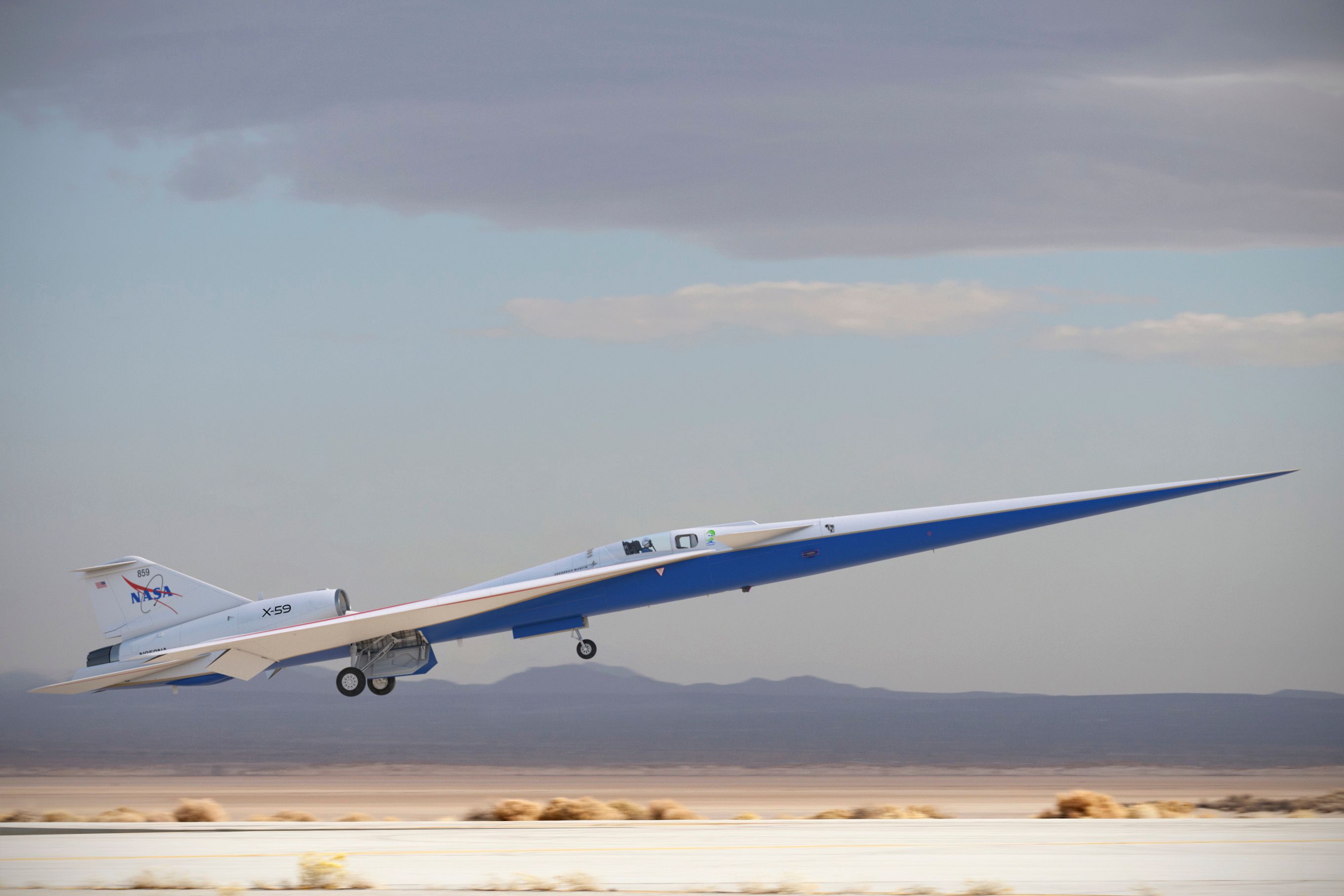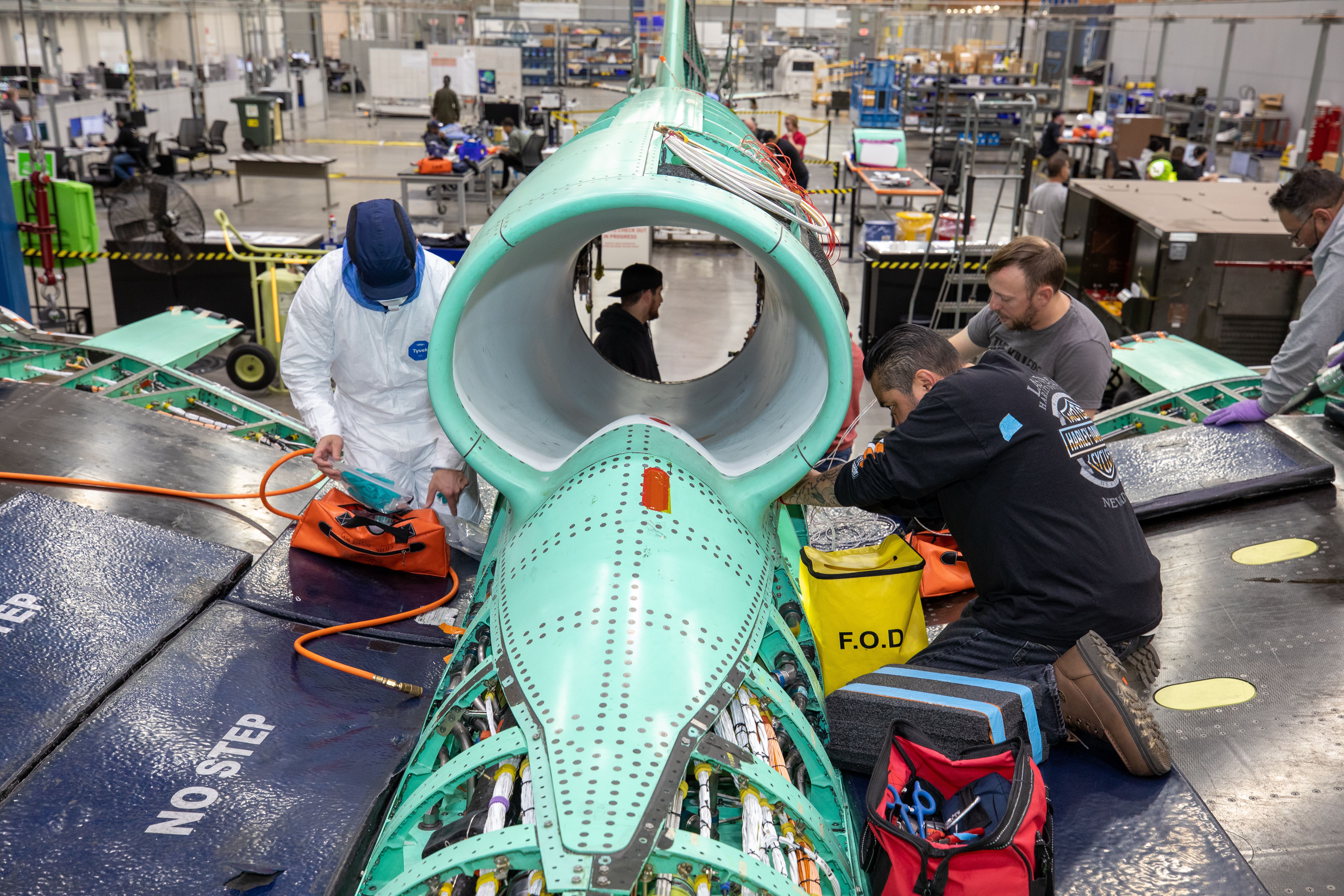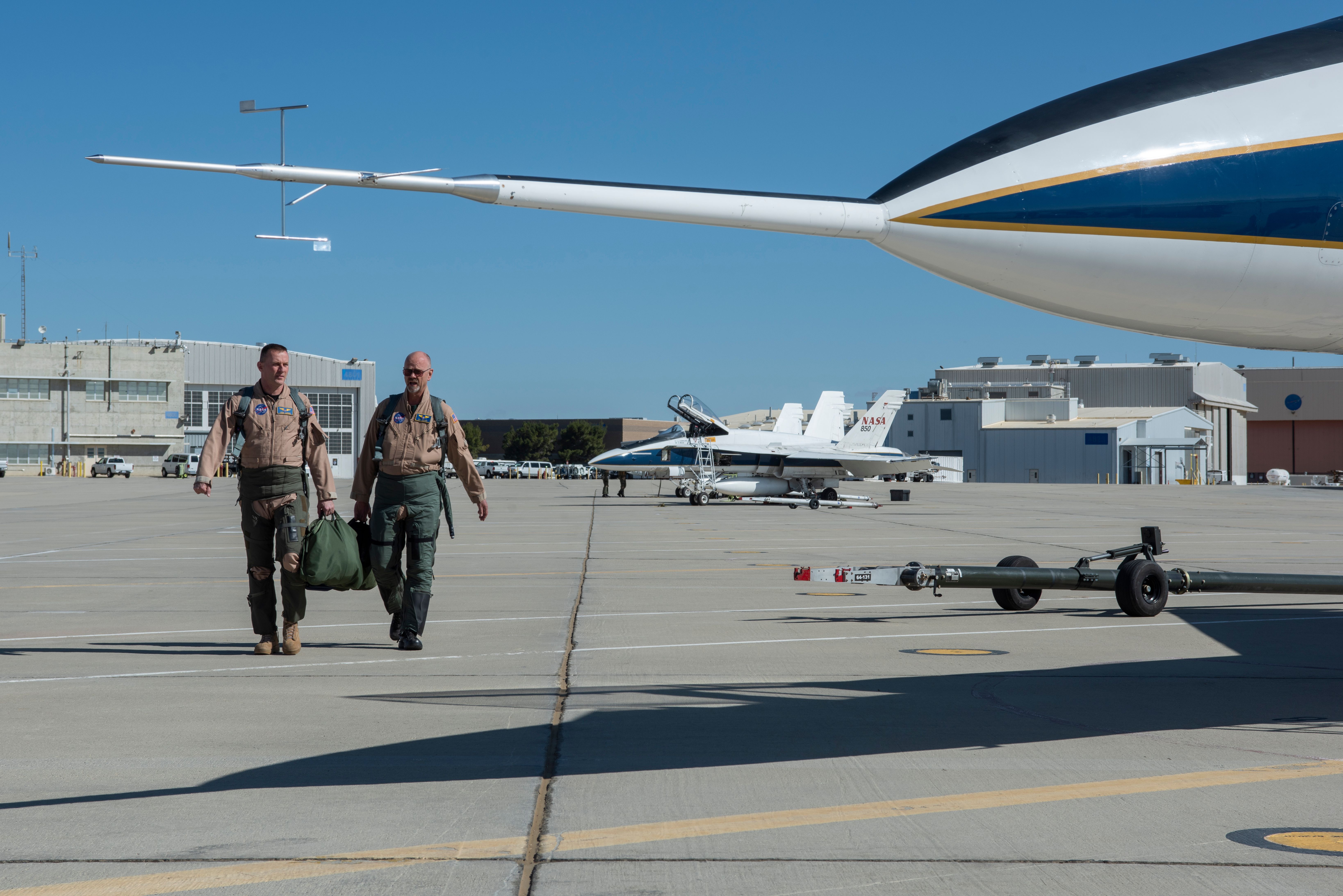The National Aeronautics and Space Administration (NASA) in the United States is taking the next steps to develop high-speed supersonic transport in the near future. Following extensive research into the technology needed and potential routes, the organization has commissioned two teams of industry experts to provide possible solutions.
What is the objective?
NASA’s research highlighted the commercial viability of supersonic flights, reaching between Mach 2 and Mach 4 (1,535-3,045 mph at sea level). This is over double the speed of the Concorde and several times more than today’s commercial jets, which travel at around 600 mph (roughly 80% of the speed of sound).
The research found around 50 established routes that are potential supersonic passenger markets. They consist of high-volume routes across the North Atlantic and Pacific Oceans, as current regulations prohibit supersonic transport over land. NASA is separately working on its X-59 QUEEST demonstrator, which is scheduled to fly later this year, gathering data about sonic boom suppression with the aim of reforming existing legislation.
Photo: NASA / Darin Russell
In the meantime, the agency announced the next phase of its high-speed travel research, bringing along industry experts to devise a plan to make Mach 2-plus travel a reality.
Who is working on the project?
NASA’s Advanced Air Vehicles Program has awarded two yearlong contracts to explore air travel possibilities, outline risks and challenges, and identify needed technologies for flight at speeds of up to Mach 4. The two teams will work separately to develop roadmaps of the technology required to realize these designs and create original designs for concept supersonic vehicles.
US aircraft manufacturer and defense supplier Boeing is leading the first team. It partners with aspiring supersonic aircraft builder Exosonic, GE Aerospace, Georgia Tech Aerospace Systems Design Laboratory, Rolls-Royce North American Technologies, and others.
Heading up the second team is Northrop Grumman Aeronautics Systems. Teammates include Blue Ridge Research and Consulting, Rolls-Royce North American Technologies, and another aspiring supersonic transport developer, Boom Supersonic. The two teams have a monumental task in front of them.
Simple Flying reached out to NASA and spoke with Jonathan Seidel, Chief Engineer in NASA Glenn’s Propulsion Systems Analysis Office, who shared the agency’s expectations from the teams:
“The Northrop Grumman team and the Boeing team are each working to identify unique solutions for a near-term high-speed vehicle as well as an advanced vehicle that could mature in the longer term. Though both were supplied with the same independent market research and contract requirements, each team has brought their own industrial experience to color this exciting solution space.”
Photo: NASA
Each group is tasked with developing a roadmap covering the various elements needed for high-supersonic travel, including airframe, power, propulsion, thermal management, and composite materials that can withstand stress.
What are they researching?
There are several vital factors affecting the viability of commercial high-speed travel. The greatest challenge lies in the efficiency and sustainability of powering an aircraft at Mach 2 to 4 speeds. The energy required to fly at supersonic speeds is exponentially larger than traditional air travel, requiring what Seidel refers to as “exotic solutions that optimize weight, performance, and a host of other disciplines to be efficient.”
Another aspect to be considered is how high-speed supersonic aircraft will blend with the existing civil aviation infrastructure. Flights into commercial airports are heavily regulated, and potential new services must meet a lengthy list of demands. Any potential project must account for factors such as keeping landing and take-off noise at certifiable emissions levels and runway lengths.
Research is also being undertaken into lowering the sonic boom, as overland supersonic operation would dramatically enhance demand by increasing the ability to reach more networked cities. The finished roadmaps will continue to guide supersonic flight following the end of the contracts, with NASA and its industry and academic partners maintaining the option to continue the research with their own investments. Mary Jo Long-Davis, manager of NASA’s Hypersonic Technology Project, noted how vital the roadmaps are to future generations:
“The design concepts and technology roadmaps are really important to have in our hands when the companies are finished. We are also collectively conscious of the need to account for safety, efficiency, economic, and societal considerations. It’s important to innovate responsibly so we return benefits to travelers and do no harm to the environment.”
Photo: NASA
According to NASA, the developed roadmaps will ideally lead to designs that both paint the landscape for commercial high-speed travel and embody a narrow field of actionable technologies for the greater community to concentrate on.
A quest to silence the sonic boom
In a separate research program, NASA is also looking to find a way to eliminate or at least dramatically reduce the sonic boom enough to allow overland supersonic flights. The agency is working with Lockheed Martin on a purpose-built supersonic aircraft, the X-59. This 99.7-foot-long, 29.5-foot-wide aircraft is powered by a single jet engine and flown by a single pilot. It is designed to operate at Mach 1.4 (925 mph), flying at 55,000 feet.
NASA will use the experimental X-59 to fly over US cities at speed and collect data on how people on the ground react to the sonic boom, which is estimated to be equivalent to the noise of a car door shutting in the test plane. The agency will then deliver that data to US and international regulators in an effort to encourage lawmakers to change antiquated rules regarding supersonic flight over land. Lori Ozoroski, project manager for NASA’s Commercial Supersonic Technology Project, explained how the two projects are related:
“We conducted similar concept studies over a decade ago at Mach 1.6-1.8, and those resulting roadmaps helped guide NASA research efforts since, including those leading to the X-59. These new studies will both refresh those looks at technology roadmaps and identify additional research needs for a broader high-speed range.”
Photo: Lockheed Martin
NASA hopes that the data can be used to develop new “sound-based rules” regarding supersonic flight over land, opening the door to many new opportunities for future generations.





